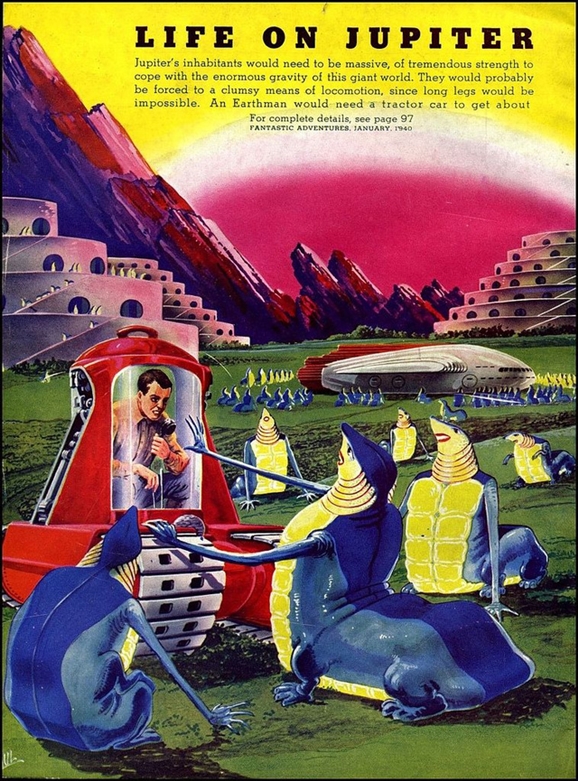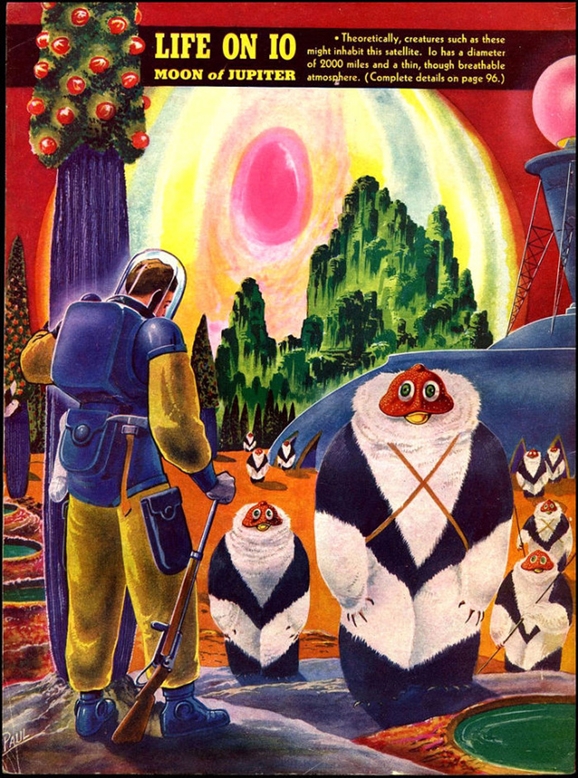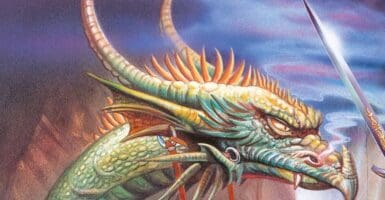Life In Our Solar System As Imagined By Pulp Artist Frank R. Paul
This article is more than 2 years old
 The more we learn about our universe, the more marvelous and overwhelming it is. The cosmos is of such unfathomable size, full of such bewildering variety, it seems that no matter how much we learn about it, there will always be more to explore. And while manned spaceflight isn’t in 2014 where I hoped it would be when I was younger, I’m still awed by the images and information sent back by Curiosity on Mars, by the Cassini mission to Saturn, and by Voyager 1, out beyond the fringe of our solar system. Still, the universe as we know it now remains full of wonders, I can’t help but be a little nostalgic for the early days when we didn’t know nearly as much, and when pulp science fiction imagined a solar system replete with life on every world and moon trekking around our sun. If you want a beautiful vision of that dreamed-of solar system, you need look no further than these images by pulp artist Frank R. Paul.
The more we learn about our universe, the more marvelous and overwhelming it is. The cosmos is of such unfathomable size, full of such bewildering variety, it seems that no matter how much we learn about it, there will always be more to explore. And while manned spaceflight isn’t in 2014 where I hoped it would be when I was younger, I’m still awed by the images and information sent back by Curiosity on Mars, by the Cassini mission to Saturn, and by Voyager 1, out beyond the fringe of our solar system. Still, the universe as we know it now remains full of wonders, I can’t help but be a little nostalgic for the early days when we didn’t know nearly as much, and when pulp science fiction imagined a solar system replete with life on every world and moon trekking around our sun. If you want a beautiful vision of that dreamed-of solar system, you need look no further than these images by pulp artist Frank R. Paul.

Paul’s work was on display throughout the golden age of pulp science fiction, especially in Amazing Stories, for which he painted 38 covers between April 1926 and June 1929. He was “discovered” by the legendary Hugo Gernsback, the editor for whom the annual Hugo Awards are named. Paul also painted covers for titles such as Wonder Stories, Planet Stories, Superworld Comics, and others, with his work adorning around 220 magazine covers all told. It looks like these “Life in the Solar System” works appeared as “back covers” for issues of Amazing Stories.

Fans of comic book history have almost certainly seen one of his better-known covers, even if they didn’t know who created it. Paul provided the cover art for Marvel Comics #1. This was back when the entity that would eventually become known as Marvel was still calling itself Timely Comics. The October 1939 first issue of Marvel Comics (the series) featured the introductions of the Human Torch and the Sub-Mariner. (Ironically, this incarnation of the Human Torch wasn’t human — he was an android.)

Among his other achievements, Paul holds such nerdy/amazing bragging rights as providing “the first color painting of a space station” (Science Wonder Stories, August 1929) and early depictions of flying saucers than some speculate may have influenced the eventual UFO phenomenon. He passed away on June 29, 1963. If you love these images, you can find tons more of his cover art over at the Internet Speculative Fiction Database.

















